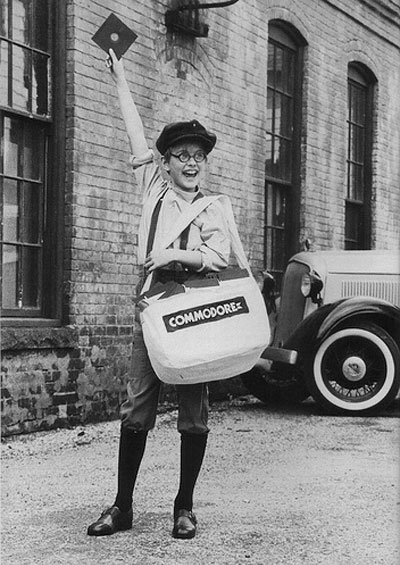
Facsimile Magazine, published by Haoyan of America. Volume Two, Number Seven, 2008. ISSN 1937-2116.
Facsimile July 2008 - Technotopia
Table of Contents

Facsimile Magazine, published by Haoyan of America. Volume Two, Number Seven, 2008. ISSN 1937-2116.
Table of Contents
By Haoyan of America & Sara Ludy
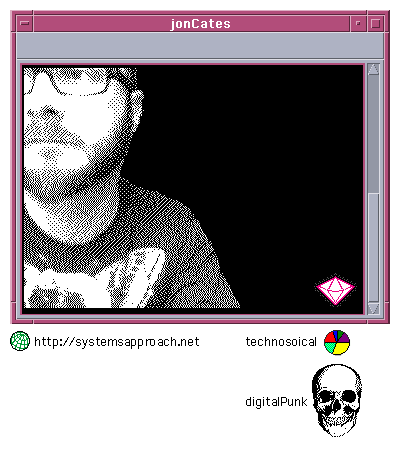
Jon Cates is an Assistant Professor in the Film, Video and New Media department at The School of The Art Institute of Chicago where he develops the curriculum for and teaches in the New Media path of study. Jon Cates's individual and collaborative projects have been screened, exhibited and/or performed at various festivals, exhibitions and events including: Interactivos at the Madrid Media Lab (Madrid, Spain); The MusicAcoustica 2006 Festival (Beijing, China); ISEA2006 (San Jose, United States); The Zacheta National Gallery of Art (Warsaw, Poland); The Academy of Fine Arts (Vienna, Austria); The Museum of Contemporary Art (Chicago, United States); South by South West (Austin, Texas) and The Boston Cyber Arts Festival (Boston, United States). His individual and collaborative projects are also widely available online through various online exhibitions, networks and platforms including Low-Fi and Netbehaviour (London, United Kingdom); empyre (New South Wales, Australia); Rhizome.org (New York City, New York) and Turbulence (Boston, United States).
>10 PRINT
>20 GOTO 10
>RUN
S: What was winter like for you last year?
i spent parts of the winter between Chicago in the States + Linz in Austria. both cities have Kristkindlmarkt in their downtown centers during the holidays. i found this to be a comforting, fun + funny connection between the 2 cities.
H: What sparked your interest in technology & digitalism?
I first heard Digitalism in their remix of the Tiga track "(Far From) Home" + that sparked my current + continued interest in them.
as far as technology is concerned, i have a broad understanding of the technological as a cultural category that is socially constructed + certainly not limited to the digital or computational. most of my interests are technological in this sense. still, in terms of the computational, i started to compute, program and play/develop games + media on a Commodore 64 in about 1983 while listening to my 2 favorite albums: Uncle Jam Wants You by Funkadelic + Autobahn by Kraftwerk.
H: Do you feel the corporate/self-perpetuated popularization of technological/geek culture has been a benefit or a burden to technological/geek culture?
Yes.
S: You agree to listen to one sound, see one shape and one color for the duration of 2 weeks. What would they be and what would they do?
what would they be:
what would they do:
i imagine they would interact + i would float between them while as well as float away from them as they are all fairly meditative (which is among the reasons i choose them + the fax that they are among my favs in those categories...)
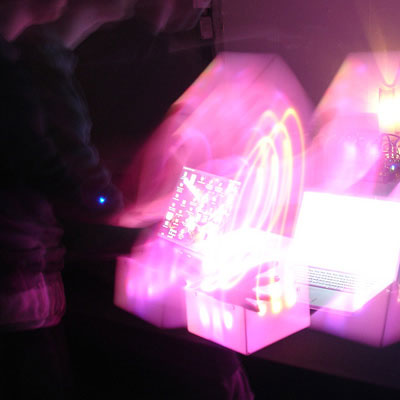
H: Do you have any early childhood run-ins with robots?
i had a very close televisual relationship to Robotech + Voltron. i also had a strong technolust + unrequited love for Armatron. + those androids from Westworld + Futureworld really fucked me up. i never looked @ animatronics the same way after those films...
H: What about Rocky IV?
Ivan Drago.
S: Do you think robots in the household is a good thing?
i'm not sure that i think robots are a good thing in general but i guess robots are beyond good + evil, amoral automatons preparing for their role(s) in the upcoming singularity. or perhaps they are deeply troubled toasters who are internally torn by contemplating the same existential conflicts that worry me over my morniing coffee. either way, i consider this is the best robot band that i have heard in a long time:
i would invite them into my home in a heartbeat.
H: Technology has always been connected with dystopic ideas of the future were humankind is overwhelmed or enslaved by their own technology. Google and Apple have been forerunners in creating a better public image for technology. Do you think the future looks better or worse?
The technological is often an site for negotiating alot of fears + hopes + desires as technology is also an expression/form of material power, a materialization of possible power structures (either those that are pre-existing, subversive, ascendent, etc...). so various *topias get expressed in the technological: utopias, dystopias, atopias, etc... many examples exist in Media Art Histories +/or Media Archeologies of early articulations of very familiar fears/hopes/desires that are still urgent or @ least persistently retraced. + as literary analysts of Science Fiction were eager to point out, especially during the Cyberpunk days, the imagined/imaged future is often a form of critique of the present. for this reason i am particularly engaged by the fact the William Gibson no longer sets his current novels in the future, as if his futurisms are now our presents. so perhaps the future looks alot like the present.
S: What did you think of the movie "Cloverfield"?
i love the idea of the sequel that Matt Reeves has suggested, i.e. that it may be from another persons'/cameras' perspective of the events of the day/night of the 1rst film. also, i was immediately struck by the articulation/reinscription of contemporary fears of terror via terrorism/terrorist attacks on NYC that seem to be @ the heart of the film. Cloverfield exists without any narrative exposition of or on the monster. we are asked as an audience to accept the monster in Cloverfield because of this monster/horror-film (as a) genre + the monster as character inside the genre without any backstory except for the hype driven by their self-conscious attempts at viral marketing/myth building online. i think/feel that this is possible now because of the familiarity of the genre as well as the film's use + restating of collective fears of large-scale unexplainable terror/terrorism in the States... which i think/feel is also an interesting topic in relation to Half-Life, a game that Cloverfield owes a great deal to in terms of aesthetics, cinematic form, genre considerations, etc...
S: Are you going to see the new Indiana Jones movie?
i'll probably see it, yes
H: Do you think technology has expanded or limited an artist's ability to create work?
For me, the technological includes tools like language, text, paint, etc... as well as the computational or electromechanical. so for me making a distinction between technological art + non-technological art or between technology + art is pretty irrelevant or @ least has limited utility.
im not sympathetic to the claim that technologies are neutral. technologies are manifested by, through + as power structures. this doesnt mean that their uses are predetermined but their formulations (structurally, socially, etc...) strongly suggest/shape certain directions of use/reception. closed source propriety technologies can be hacked, cracked, reverse engineered, etc... to redirect + creatively reuse or detourne them. i am very engaged/inspired by unintended uses of technologies.
H: You played music in a group called "A Very Sensitive Device", what are your thoughts on the state of music, commercially and artistically, today?
Personally, my approach to experimental musics + realtime audio/video noise performance has moved more in the direction of digitalPunk...
After A Very Sensitive Device ceased operating, i have began a solo project called THE FAULTLESS. THE FAULTLESS is an undead metaphor floating in pirate waters, singing digital punk rock karaoke remixes of songs written by punk bands that i was in as a teenager in the 1980s. I am a one man skeleton of a digital punk rock show, crashing computer systems while screaming lyrics from political texts that analyze fascism, totalitarianism + nostalgia. THE FAULTLESS celebrates pirates, piracy, broken codes + dirty new media. THE FAULTLESS' multimedia performances combine electro + digital punk errorism, channeling the zeitgeist of mid 1990's Digital Hardcore through various punk rock personal hystories. If “Punk is not Dead!” then THE FAULTLESS lives by the motto “Pink is not Red!”
i.e. the faltless.info
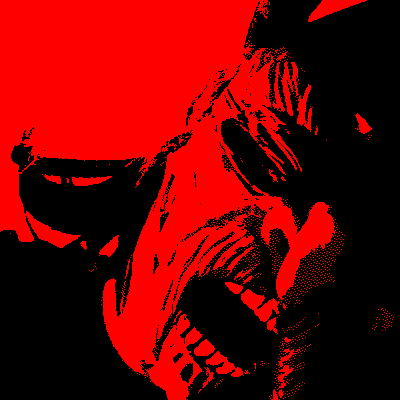
In terms of collaborative + improvised work, jake elliott + i have begun a realtime audio video project called "0UR080R05". 0UR080R05 (translated from LEET into English as "Ouroboros") intertwines hacked typewriters, a hand built computerized 16mm film projector/self-modifying psychedelic cyberware + cut-up/folded-in footage of William S. Burroughs, Brion Gysin + the 0UR080R05 project itself to create a cybernetic third mind. Live coding of self-modifying programs + processing of these audio and video signals creates an expansive and contractive recursive system that eats + excretes itself like a data bent digital version of Ouroboros, the dragon who swallows it's own tail, symbolizing infinity. we thread this infinite regress back into the system that is currently being used to project the self-same speculative code/film (recursive code snippets getting stuck + sucked back (feed back + feed forward loops expanding + contracting)) into 0UR080R05' own owlish entrails.
i.e. 0UR080R05
S: For sound art enthusiasts, which Chicago venues do you recommend?
Chicago is a great place for experimental New Media, realtime audio video, noise, sound, etc... new spaces develop often + run for various amounts of time. independent spaces + projects such as:
as well as venues such as:
The Empty Bottle regularly book experimental shows + events. check their sites for the most recent information + if you plan to be in Chicago.
H: In Alvin Toffler's book Future Shock (1970) , he described an age in which technology will supercede most people's ability to comprehend it, take for instance people over the age of 63 today struggling with the idea of windows inside of windows (modern computer operating systems and web browsers). In what ways do you think people can prepare themselves for the phenomenon known as "future shock"?
Shock themselves in/with the present.
H: Do you believe the time for space travel is at hand?
We are always already space travelers on spaceship earth as bucky fuller might have said. so, perhaps the time for space travel is in the past. i have been thinking/feeling lately about the ways in which we can address what is happening to us in the present, presently. space travel/tourism is already a reality for rich/wealthy elites. the problems those of us in the rest of the 99% of the population will face will be what becomes of those of us that are earth-bound + cannot escape planetary conditions. of course, off-world space travel will be a necessity for the survival of earth-based life because we will eventually need to escape our sun's inevitable extinction/exhaustion... but of course that is an inevitability that i will not personally experience. i have experiences now + w/those that i love here on spaceship earth that concern me in the present about our present conditions + how we are addressing/correcting those conditions.
S: Are you going on vacation?
i am traveling a bit now but not really on vacations
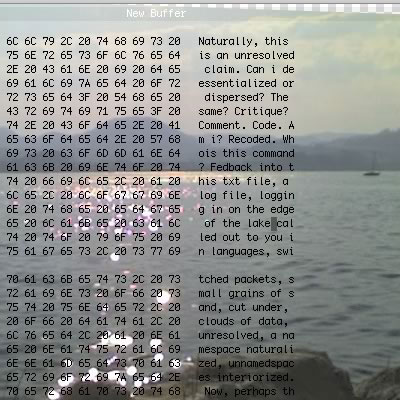
H: What do you think is the greatest impact technology has had on society?
I think of the technological as socially constructed. the term "technosocial" is used in Technology Studies to express that the cultural categories of the technological + the social are not distinct but are deeply intertwined in feedback/feedforward loops that shape/direct each other. i would imagine this interweaving to be the greatest impacts that the social + the technological have on each other.
S: Scientists have made an Invisible Cloak. If you had a piece that was 24" x 24", what would you hide?
i would hide myself of course. the question then is what would i do w/this new found superpower...
H: When Tim Berners-Lee married hypertext with the internet resulting in what we now know as the World Wide Web, he made it available freely, with no patenting and no royalties due. He felt it was something too great and important to be owned/controlled by one person or entity. Large corporations today place very high values on secrecy and patented technologies because of investors and share holders. What are your feelings on Technological Secrecy, the Open Source Movement and Net Neutrality?
as an artist i have a fairly agnostic approach but i use FLOSS (non-exclusively) + am very engaged/inspired by Open Source + Free Culture movements.
as a teacher i focus my students' attention on critical thinking and studio skills so that they can creatively question the assumptions of dominant corporate media cultures in the studio art context of experimental New Media Art histories, theories and practices. in order to do this i instruct on Free & Open Source software as well as commercial closed source applications + software suites. during technical instruction i attempt close + critical readings of computer hardware/software that investigate/interrogate both Open Source fanaticism + Corporatist models of consumption/restriction.
H: Do you think there is a future with the semantic web?
Yes, definitely.
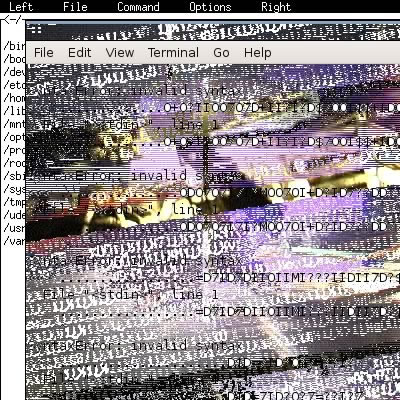
S: Something happens and you are unable to use any electrical device to create anything. What form would your work become?
thats a rly great question + 01 i have certainly asked my self before... for instance in an oilpunk future/present where certain realities reach the States or rather when people realize the state of depletion that natural resources are in, i.e. when conservation of those natural resources is no longer an option but a constant reality, how will using electromechanical devices for art making change? + how will people such as myself respond? sum people are already responding/preparing. ap [martin howse + jonathan kemp] who make artware situations developed a project called ap0201:
ap0201 - ap [martin howse + jonathan kemp] (2002 - 2005)
that involves an open sourced artware system installed on hand-built devices running + displaying self-modifying code. these devices are powered by solar energy + then installed in remote locations w/harsh conditions such as the Mojave Desert. projects like this, where New Media Art is created that can sustain itself in terms of a power source are very interesting to me + point towards possible options for considering what will happen not when we are unable to use electromechanical devices (as that is not the real issue) but when we must seriously consider approaches other than relying on oil-based economies, existing power grids, closed source consumer hardware/software products, etc...
of course, another answer to this kind of question is that i rely on the technology of writing more than any other technology. in the past i have experienced a lack of access to computational or digital technologies based on economics as well as other very basic situations. when those situations occur, i simply turn back to paper-based writing, planning, drawing, psuedo-coding, etc...
S: You've been nominated as the smartest friend on Facebook by way of the Smartest Friend Application. How do you feel about that?
maybe it makes me feel that i'm doing 'the Right Thing in a wide variety of complicated circumstances' but of course 'reasonable people may disagree.' in any case, it could also make me feel 'brittle' in the sense of being 'functional but easily broken by changes in operating environment or configuration, or by any minor tweak to the software itself.'
H: What is your favorite technology company right now?
i dont play favorites :) but i enjoy alot of the current social software/tagging services/systems.
S: Do you have plans for future collaborations? Migration?
yes, always :)
for updates goto:
S: What is your favorite summer beer?
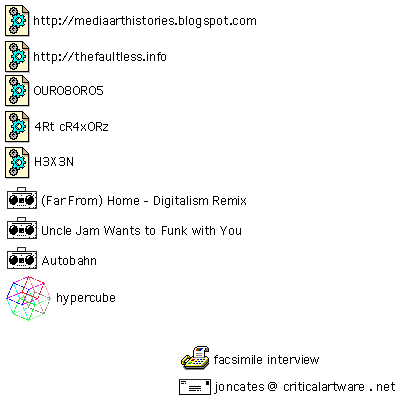
>STOP
>30 PRINT "THANK YOU JON CATES AND SARA LUDY"
>END
By Edward Ihnatowicz
Written in September 1975 and published in Artist and Computer, pp. 32-34, edited by Ruth Leavitt.
Edward Ihnatowicz was a Cybernetic Sculptor active in the UK in the late 1960's and early 1970's. His ground-breaking sculptures explored the interaction between his robotic works and the audience, and reached their height with The Senster, a large (15 feet long), hydraulic robot commissioned by the electronics giant, Philips, in Eindhoven in 1970. The sculpture used sound and movement sensors to react to the behaviour of the visitors. It was one of the first computer controlled interactive robotic works of art.
A great deal of discussion among computer-artists is centred around the question of whether the computer should be treated as a tool or as a medium, with some purists insisting that the term 'computer-art' should be reserved for the latter. The distinction may appear arbitrary, but it is in fact important because it distinguishes those artists whose inspiration comes from outside the world of computing and who use the computer simply for convenience from those whose ideas have originated as a result of computing experience.
My own involvement with computing began very much as a matter of convenience with a large, mobile sculpture being half completed before the possibility of using a computer was even considered, but the resulting experience has left me thoroughly entrenched in the computing field and apt to regard any present-day artist unfamiliar with computers with some concern!
The sculpture in question was built for Philips, the electrical firm, for their permanent technological exhibition in Eindhoven, Holland, and was called the Senster. It was completed in 1971 and took three years to build. It consisted of a sensing head comprising a moving array of microphones and two close-range radar transceivers borne on the end of a 15 foot long, articulated arm, powered by electro-hydraulics and controlled by a computer. The computer provided the machine with a certain behaviour pattern which on the lowest level tried to determine the location of any sound in the vicinity as well as the presence of any rapid physical movement and then to use this information to generate a movement of the whole structure. If the sound was persistent and below a certain intensity the movement was towards the sound, or away from it if it was too loud or accompanied by any violent gestures. This simple strategy resulted, nevertheless, in a very complex behaviour due partly to the complicated acoustics of the exhibition building and partly to the behaviour of the visitors who frequently surrounded the exhibit in large numbers and in the case of the younger ones, with a sustained din. The atmosphere around the sculpture was much more like that of a zoo than an art exhibition and I am sure that the majority of visitors would have been surprised to learn that the constructor of this machine had any pretensions to being an artist.
They may well have been right, since the title of an artist is an accolade rather than a qualification, but certainly my aims were artistic, as is my background. I had a standard art-school education (Ruskin-Oxford) and any technology I know is entirely self-taught and merely sufficient to carry out my designs. The involvement of artists in science and technology is not a new phenomenon since artists, like scientists, have been traditionally involved in investigations of nature, or more specifically, those aspects of nature which the current technology make accessible.
Speculation on the general question of what distinguishes the artistic approach from the scientific one are seldom profitable but perhaps a very personal view of such a distinction is worth making in view of the very technological nature of my work.
The scientists, it seems to me, tend to view the world as a vast, natural system, operating according to absolute and immutable laws which they try to discover by measurement and deduction, and they consider their own existence in it as being of no consequence. They are aware of the fact that all our knowledge is reducible to explanations of relationships within a floating frame of reference and are concerned about the difficulty of establishing a firm datum. In contrast, the essence of the artistic approach is to accept oneself as the only reference point and instead of explaining the world, to demonstrate the way in which it appears to one. This is not to say that such an attitude is a conscious one and that it exists at all is only an assumption. It is borne out, however, by the ease with which the work of most of the artists of the past can be accurately placed within its period and locality and even attributed to a specific person. It would seem that the artist acts here like a kind of anthropomorphic filter, choosing from the infinite number of possible aspects of reality those currently accepted as 'normal' with, perhaps, the individual deviations which at one and the same time identify him and constitute, often, his chief contribution. This 'normal' view of reality changes continually and is, of course, frequently affected by the current scientific and technological preoccupations and discoveries and thus is easily detectable in the contemporary art. Consider, for example, the impact on art of the discovery of perspective, printing, photography or the Newtonian theory of colour.
At the present time the effect of digital computing on our appreciation of nature is of fundamental importance and the area where the possibilities it offers are, to me, the most exciting is that of a better understanding of natural methods of control or development, growth, movement and behaviour in plants, animals and ourselves. The techniques of digital programming have greatly increased our appreciation of natural shapes and processes because instead of merely marvelling at their complexity, beauty or functionality, we are now in a position to consider the methods and techniques employed by nature in their generation. The popularity of Conway's Life game reflects this interest, as do many programmes written to generate shapes reminiscent of trees, plants and flowers.
Even more intriguing is the possibility of investigating and simulating the behaviour of complete systems, both natural and artificial and their responses to changing environments because this leads us directly into the realm of perception which, to my mind, is the central problem of intelligent life.
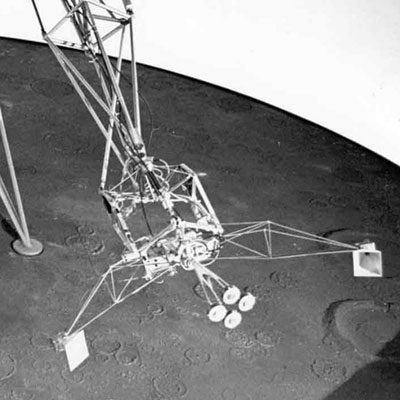
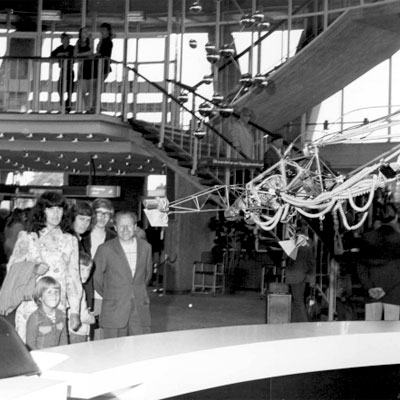
A great deal has been said about the research field known as artificial intelligence, most of it uncomplimentary and deservedly so in view of the many exaggerated claims and unfulfilled promises; nevertheless the understanding of understanding must remain one of the most inspiring goals of our civilization. This is a very new and uncharted area and many claims have been laid there by such scientific disciplines as neurology, psychology, linguistics, statistics and various computer sciences, to the point where the ambitions of any artists to enter the field may appear forlorn, if not actually presumptuous. The fact is, however, that no one has yet proved the suitability of any particular discipline for this type of investigation and, in view of the paucity of practical results, the game must be considered still open.
I should like to put forward a, no doubt biased, view of the difficulties which a purely scientific approach produces. The difficulties are to a large extent semantic in nature and have to do with the fact that scientists are fond of definitions, and that there are no satisfactory definitions for any of the relevant notions. Notions such as learning, perception, image, memory, cognition, knowledge, not to mention intelligence itself, are not in any absolute sense definable because they are all descriptions of relationships and attributes of natural systems and their environments. They can be demonstrated and appreciated more easily than defined or proved. If we can accept that a possible way of approaching the problem of cognition is through the study of the behaviour or artificial systems capable of simulating natural behaviour, then we must admit that there are very few guide lines for the design of such systems. Under such conditions it is at least possible that an artist's open-ended, pragmatic approach may be of value.
What I am suggesting here is that even if we cannot describe intelligence we can certainly recognize intelligent behaviour and that the characteristics of such behaviour are such as to make them, in theory at least, demonstrable in an artificial system.
There is a commonly held view that even if the use of models of cognitive systems is a necessity, their actual, physical construction is not, since any such model can be adequately simulated in a computer. If accepted, such an argument would seriously undermine the usefulness of the proposed artistic approach since it is especially in the area of design and construction of physical shapes and control and interpretation of physical movement that the intuitive approach might be expected to be of value. Computer simulation has a serious drawback, however, in that it neglects the possibility of interpretation of sensory data by means of physical, ie. mechanical interaction, and there are good reasons for believing that such an interaction is the key element in the process of perception. It is difficult, in fact, to talk about the process of perception and quite impossible to demonstrate it without reference to some physical system, since the perception we are talking about is not the perception of abstract notions but of physical entities; it is clearly impossible to demonstrate an awareness of a physical entity within a purely conceptual model.
Perception can be thought of as the process by which any cognitive system, natural or artificial, is informed about the state of its environment. It is not a measurable quantity and its existence in any system can only be established by an evaluation of its responses to the changes in that environment. Such responses are easiest to detect if they take the form of mechanical motion and this is one argument for construction of mechanical models. Another, and a more important one is that physical motion may be, in any case, a prerequisite of perception.
If we consider the possibilities of artificial simulation of perception, then a technique of measurement or comparison is a likely elementary candidate. This is because to perceive is to become aware of some property like size, colour, temperature or weight of some object or part of the environment or of the entire environment and this is only possible if this property undergoes a perceptible change or if another example of it is available. (If all the objects we ever saw were coloured blue we should not be aware of that fact.) Differences must be measurable and thus the process of perception is basically one of measurement or comparison. The problem is vastly more complex, of course, but the concept of comparison is a useful one because it raises the question of natural standards for what is to be considered normal. An autonomous artificial system should not have to rely on preprogrammed or hard-wired standards but be capable of establishing them independently. In such a case the only immutable standards available to it are some aspects of its own structure. It is conceivable, for instance, that a system capable of moving itself bodily and of sensing the force exerted in the process might be capable of forming a notion of weight by comparing this force with that required to, say, remove an obstacle. Similarly, a concept of length could be established by noting the distance travelled or the range of movement of a limb.

Conceptualization is, of course, another problem but it can be thought of in a similar way and considered as the result of correlation of two or more types of perception relating to the same object or entity. If, for example, a system can establish a definite correspondence between a set of visual data and a set of tactile data, a possibility exists of formulating a concept or an idea of the object to which these data appertain. Visual and mechanical perceptions are eminently suited to this role because they overlap in the all-important area of spatial and kinematic characteristics. Visual sensing informs us in addition about the optical properties such as colour and transparency while the mechanical one about mass and dynamics, but both can inform us about sizes, shapes and movements of the same objects. In this way a concept can be seen to be not merely a perceptual record, but a means of complementing sensory data so that, for instance, an image of a known object may be elicited from its tactile exploration.
The important practical conclusion that can be drawn from such considerations is that the most basic type of properties that any cognitive system must be capable of perceiving is the mechanical one since it is through the consideration of the mechanical attributes that objects are most readily distinguished. The perception of visual images which is the most common form of perception we think of would seem to be much less important and only possible in conjunction with mechanical sensing.
One property of mechanical information which distinguishes it from most of the others is that it cannot be obtained passively. According to the quantum theory every form of measurements disturbs the quantity being measured, but it is never as apparent as when applied to mechanics. It is clearly impossible, for instance, to determine the stiffness of a spring without moving it. It appears, therefore, that the ability to perceive, or at least the ability to learn to perceive, depends on the ability to voluntarily disturb the flow of sensory information in a measured way which generally requires some form of physical movement.
This line of argument can be extended to include other types of information and is especially important in the case of vision which can be shown to be impossible in systems incapable of physical motion. This is well known to the psychologists who can demonstrate that cats, for instance, fail to develop an ability to see if prevented from moving during a specific learning period. That this should be so is easy to appreciate when we consider that vision is in general, and in the case of pictures always, a process by which a three-dimensional reality is reconstituted from its two-dimensional optical projection. Clearly such a process can only take place in a system capable of appreciating the properties of solid objects and, as we have seen, this requires an ability to move.
The area of interaction between optical and mechanical systems is in fact where the most exciting developments can be expected, but at the present moment the data acquisition processing expertise in the two fields is grossly out of balance. On the one hand we have very highly developed television technology, and on the other an assortment of electro-mechanical transducers and data loggers designed for simple measurements. What is required is a method of producing a mechanical image of an object rather like an image which we form in our mind when, for example, picking up an apple in the dark. Techniques for obtaining this type of information are not as yet developed and will probably require the construction of manipulator arms with sophisticated control systems employing either a large number of parallel force and vibration sensors, or a precisely controlled sequence of exploratory movements, or both. The even more difficult problem which needs to be solved is the method in which such information should be encoded. This is, to my mind, the central problem of artificial intelligence, but it is also one which may show us the way in which such systems ought to be developed. It boils down to the essential question of what intelligence is, and it may prove that it is the process of correlation of sensory and motor function in the way which may lead to the establishment of profitable responses and behaviour patterns.
In writing this I am aware of overstating my case and oversimplifying the issues in the interest of clarity in a manner which will irritate tidy-minded people. I am equally aware that this is not the place where such esoteric arguments will be proved or disproved. Like perception itself they will need to be demonstrated. I hope, however, that these rather self-indulgent musings may illustrate the way in which high technology and computing in particular is capable of affecting at least some artists.
If the above considerations do not constitute a design for a practical cognitive system, they may perhaps indicate some of the conditions under which such a system might evolve. They also constitute the framework within which I hope to continue to work and provide the criterion for the design of any other cybernetic sculptures.
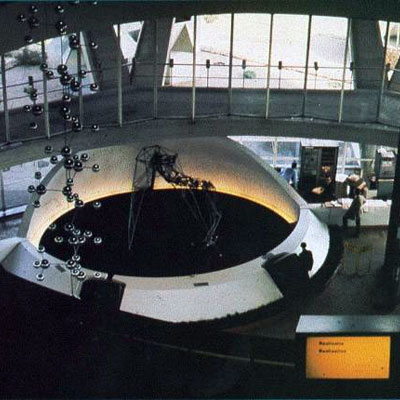
Learn more at senster.com
By Frisbee Jackson
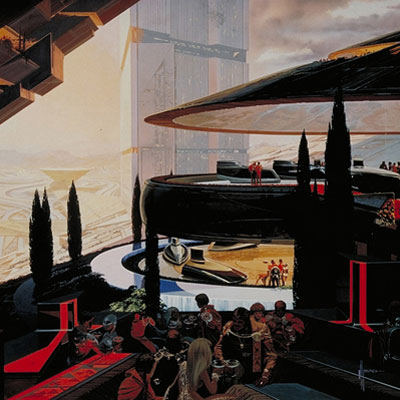
I began to kneel to pick up the bit of freeze-dried hybrid mango that I had so rudely dropped on the carpet, "Don't worry about it, the Robo-vaccum'll get it," my host so graciously assured me. I absolutely hated wasting freeze-dried mango; it was my weakness, just one of the myriad of temptations I succumbed to. I could not say no to sugary bright orange slices of the tropical fruit.
"Right," I stammered and reverted back to my full 6'3'' stature. I had not yet grown accustomed to the lifestyle of the outrageously wealthy in the new city. As a humble young journalist, I only sought the basics in life. Although I suppose a robo-vaccum wasn't really anything new or lavish, but my apartment in the heart of the old sector did not contain such luxuries. In fact, after my dishwasher began sputtering a few years back, I have yet to get a replacement. According to my friends I was a Neanderthal, still living in the early 2000's.
My host sat, legs-crossed on the red micro-fiber sofa of the minimalist style that the young wealth had embraced. I interviewed the up-and-coming originator of the movement the other week.
"Trey Phan, right?"
"What?" she responded absent-mindedly as her drink refilled itself. "Oh right. Paul loves this type of shit." She crossed her legs again, this time left over right.
"Well that's a good segue into the article. What's it like living with Paul, arguably the premier architect of the new sector, and the definitely the youngest?"
"It's great. He's been gone a lot lately surveying different sectors all over the grid, but we make it work."
"How did you two first meet?"
"I don't know if he'll like that I'm telling this, but actually a Pilates class. It was the summer before my senior year of college, and Paul joined my class. I didn't know who he was then, but always thought he was cute."
My handheld recorded each question and each answer with ease. Letters and words popped up on the screen at breakneck speeds. This was probably the only high-tech item I possessed. Suddenly, it stopped. I looked down at my handheld. I felt a ray coming in and sure enough my handheld began to vibrate.
"I'm really sorry, but I gotta take this." I stepped onto their balcony overlooking the arrays of glass buildings, many of which Paul himself designed. A little image of my boss appeared, "First murder in the new sector. You're the closest one there, so I need you on the scene. I know you normally only cover A&E, but sorry man, you're the closest to the scene, so I need you there. You know I don't want to do this, because damn, Liz sure is a hottie."
My boss was one of those sexual-harassment types. This is why he wasn't out doing the field work. I went back into the house.
"Sorry Liz, but I've got to fly. You know how it is. Can we reschedule?" I asked apologetically and grabbed my jacket.
"Oh yea sure, not a problem. I'm not sure when I'll be able to next though, I'll be working on the line and the benefit for the next few weeks. Just shoot me a ray, and I'll see what I can do." She downed her fourth glass.
"Thanks so much," and I quickly left. Heading down to the area where the murder occurred, the streets got continually dirtier. Brand new sky-rises looked abandoned. Kevlar windows were scratched up and gratified over. The new sector wasn't all it was cracked up to be. This I would soon find out.
By Rachel Thomas

You are reading this article today thanks to computers. You could be anywhere in the world reading it on a web browser, the words and images transmitted almost instantaneously across the internet over thousands of kilometres.
Computers have had a massive influence our lives over the last 60 years, but they were actually first invented nearly 200 years ago. And one of the pioneers was a female mathematician called Ada Lovelace, who created one of the first computer programs and understood something of the enormous potential of computers.
Lovelace was born 192 years ago, on December 10th, 1815, to an unconventional family. Her father was the famous English poet, Lord Byron, who was described by one of his lovers as "mad, bad and dangerous to know". But only a month after her birth her parents separated (due to Byron's scandalous affair with his half-sister), and Lord Byron went abroad never to see his daughter again.
Lovelace's mother, Anne Isabelle Milbanke, was also a very unusual person. She had a passion for mathematics which lead her ex-husband to once call her "the Princess of Parallelograms". So she ensured that her daughter had an excellent education in all subjects, and particularly in mathematics. Just as it was rare at the time for a woman like Milbanke to have an interest in mathematics, it was very unusual for her to provide such a good education, particularly a scientific one, for her daughter. At the time women weren't allowed to go to university or join learned societies, they couldn't vote and married women couldn't even own property. But, like her mother, Lovelace excelled in mathematics, and was encouraged by another female mathematician, Mary Somerville. And when, at the age of 17, she met Charles Babbage, she found the area of work in which would make her mark on history.
Although there were no computers as we now know them in the early 1800s, a different sort of "computer" was already in existence. This was a person whose job was to perform long and arduous calculations to find the values of logarithms and trig functions, calculations we now perform with electronic calculators. These human computers produced sets of mathematical tables for use by astronomers and navigators among others, but, unsurprisingly considering the difficulty of the calculations, these tables were known to contain many errors and mistakes. So Charles Babbage decided to create a machine, called the difference engine, to perform these set calculations automatically.
This was the age of steam, with electricity no more than the subject of early experiments, so the difference engine was envisaged as a mechanical machine, with brass cogs and moving pistons, to be powered by turning a crank or by steam.
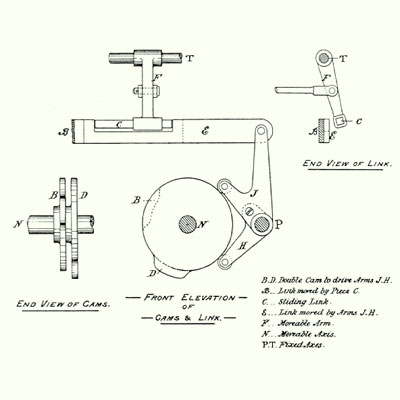
During the construction of the first prototype, Babbage began to think about an even more advanced machine - the analytical engine - that would be able to store data and perform sequences of instructions defined on punch cards and fed into the machine, like the Jacquard looms of the time. This would mean that the analytical engine could be programmed to perform any type of calculation and be a direct forerunner of the computers we use today.
Lovelace saw the prototype difference engine and was fascinated by it, and by the possibilities of the plans for Babbage's analytical engine. She began to correspond with Babbage and became an expert on the engines. But she held back from publishing her own work on the subject, instead offering to translate an Italian scientist's report on one of Babbage's lectures. Women at the time faced great difficulty working and publishing in science, and, when Babbage, aware of her knowledge, asked "why she had not herself written an original paper on a subject with which she was so intimately acquainted", Lovelace modestly replied that the thought had not occurred to her.
Babbage and Lovelace agreed she should add her own notes to the translation and this addition ending up being three times the length of the original work. Her Translation and extended notes (published in 1843) became the most important work describing the analytical engine and how it could be used. Most famously, the "Notes" contained the first published computer program - instructions on how to calculate the Bernoulli numbers. It doesn't look much like what we now think of as computer code, but when punched into the instructions cards it wouldn't look that different from computer instructions on the punch cards used up until the 1970s.
Not only was Lovelace a pioneer of programming, but she saw beyond Babbage's vision for calculation to other potential uses for the analytical engine. She saw that the instructions and data need not represent numbers and numerical operations, but could also represent letters, images or music - a vision of modern computers and software over a century before they came into existence.
Perhaps the most amazing thing about Lovelace's work was that her program for finding Bernoulli numbers, and her thoughts about the way the analytical engine and its descendants might one day be used to create music or images, were all about machines not yet built. In fact, despite all the brilliant ideas, the analytical engine was never constructed because artisans of the time lacked the expertise to make the necessary complicated mechanical parts.
The only part of the machine to become reality was the part called the mill, which, like a modern computer's CPU, carried out the numerical operations. Babbage's son built it and used it to calculate up to 44 multiples of pi to 29 figures.
We may say most aptly that the Analytical Engine weaves algebraical patterns just as the Jacquard loom weaves flowers and leaves - Lovelace describing the Analytical Engine in the "Notes"
Sadly, Lovelace's health deteriorated following the publication of the "Notes". Many have felt that this was in part because she lacked a new mathematical project, although she herself felt that other publications would follow. Her friendship with Babbage continued and they tried at one point to calculate a surefire way to win at the horse races. But Lovelace's health and work continued deteriorating and she died of cancer in 1852, aged just 36.
It wasn't until programmable computers were first built in the 1940s that Lovelace's and Babbage's vision came to reality. In the 1970s, when the US Department of Defense decided to create a standardised computer language to use for its applications, they named it ADA in Lovelace's honour. The ADA language is still in use in critical systems such as air traffic control, in planes such as the Boeing 777, in rail transport including the TGV in France, the New York subway and London's tube, and in space missions such as Mars Express and the Beagle 2.
Although Lovelace never lived to see her programs and her visions of computer music and graphics come to life, we enjoy the benefits of these technologies every day. And it is amazing to think that this woman, who foresaw something of the amazing potential for computers and the immense impact they would have on our lives, never got to see one in real life and worked with one only in her imagination. Ada Lovelace, mathematician and computer pioneer, understood their potential over a century before the computer revolution began.
By Ian Willoughby
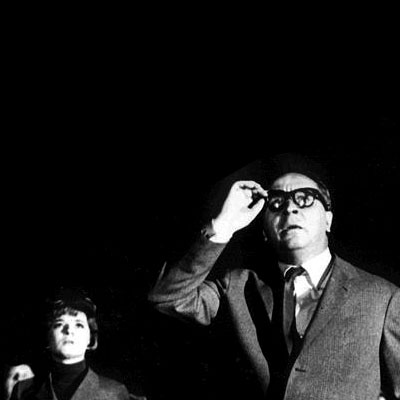
In today's world, interactive media is a normal part of our everyday lives. It might surprise you, though, to learn that it is a full 40 years since the launch of the world's first ever interactive film. "Kinoautomat", as the system was called, was a hit as Czechoslovakia's entry at the 1967 Expo - before the country's communist authorities effectively killed it off. Now however, four decades later, it has been revived in Prague.
Alena Cincerova's late father Raduz Cincera invented the Kinoautomat.
"It is interactive because it's the first film in the world where the audience can change the plot by voting, by pushing buttons. They are choosing several times, nine times throughout the movie. They can choose how the situation will go on.
"Mostly it stops in very dramatic moments, and then an actor comes on stage and asks the audience to decide what the main hero of the movie should do."
The film, a comedy called Man in His House, is repeatedly stopped by an actor who appears on stage in front of the screen at key moments and acts as a kind of master of ceremonies.
At one point for instance for instance he halts the projection just as the film's main protagonist has been flagged down by a traffic policeman while in hot pursuit of his enraged wife in a taxi. Audiences push a green button if they want him to hit the gas, or red if they want him to stop.
The MC uses essentially the same script as the original from 40 years ago, when the Kinoautomat system and this - its only film - caused a sensation at the 1967 World's Fair in Montreal.
"The New Yorker magazine at that time wrote that it was really the hit of Expo 67, and Czech people should build a monument to Raduz Cincera, who invented the whole idea. Unfortunately the monument was never built, as in those stupid Communist times it was somehow hidden and forbidden. And now I am trying to build a monument to my daddy."
I understand also that when it was first shown in Montreal the actor who played Mr Novak couldn't speak English.
"That's true. Mr Hornicek was a very popular comic actor in this country. He wasn't able to say a word in English, so he was studying all his role in English - because the film was dubbed into English in London. But the stage which he was acting, or presenting, every day for six months he had studied like a collection of sounds - he didn't understand them at all.
"He was really very surprised when he came the first time in front of an audience in Montreal and started to...produce this collection of sounds, and the audience started to laugh.
"A lot of journalists came to him and wanted to do interviews with Mr Hornicek but he wasn't able to reply. He didn't understand. Then he asked my daddy to teach him one more sentence, which was, I cannot talk with you, but I can drink with you."
Despite the film's success in Montreal, it wasn't shown here in Prague until four years later, in 1971. It was so popular that there were screenings twice a day. But less than a year later the Communists had banned it. Alena Cincerova explains why.
"All this group of authors was so-called 'politically unconfident', they didn't like them so much and I think that was the main reason the film was put in the safe, like many other beautiful films from the so-called New Wave era, the golden era, of Czech cinematography."
Times have changed, of course, and the Kinoautomat has been taken out of the vaults and dusted down. But speaking after a successful first night, Ivo Anderle, manager of the cinema screening the film, says he still feels it is a huge pity the system was not allowed to go further the first time round. Raduz Cincera"As you might know, originally at the end of the 60s all the big Hollywood studios were asking Mr Cincera for Kinoautomat licensing.
Unfortunately in the Socialist era this was not possible, it was the property of the state which did not care so much about selling it, so Kinoautomat was not lucky."
Now that it has been revived 40 years later, what kind of experience is it for a modern audience? Among those at the premiere was journalist and film maker Erika Hnikova.
"In the beginning I was a little bit interrupted but when the story was going on it started to be more and more interesting, and I really liked it. And in my mind I was also figuring out how the story could go on, if I choose this way or that way. The first half an hour I didn't know but then I really started to like it and I enjoyed it."
Did you feel frustrated when people voted the other way from you?
"(laughs) Yes, a little bit. I was also asking myself, maybe I should come again and to see if there will be opposite changes in the situation."
The film is 40 years old. I'm curious how you think that it has aged.
"Not at all, because it has typical Czech humour which you can see in the films from the '60s. The story works and the main thing for me is to think about if there is...some morality in the film. In your mind you are trying to figure out the situation in your life where you had to choose."
So a novel experience for viewers then. But is the current limited Prague run a last bow? Or could Kinoautomat possibly have some kind of a future? Ivo Anderle again.
"We have a little bit of hope hidden in our hearts that maybe with this revival something will happen. We don't know what, but we were already approached by some people internationally, who are asking us if it's possible to move the system.
"But for us that's the future. We have the three weeks now of the show in Prague, and if it is successful and it proves to be alive and has a lot to say to today's people, we would be more than happy to see if we can travel around the country we will take it around the country, internationally.
"The English version still exists, so things are possible and we will see how far we get."
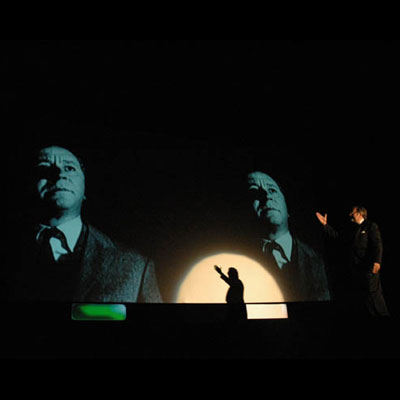
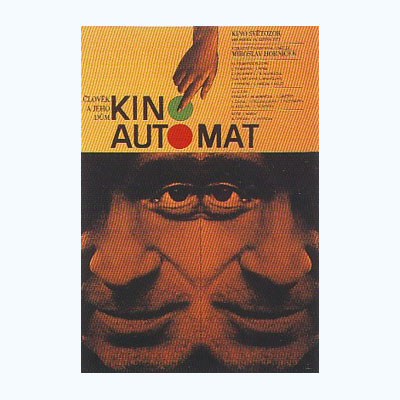
Foreword by Haoyan of America
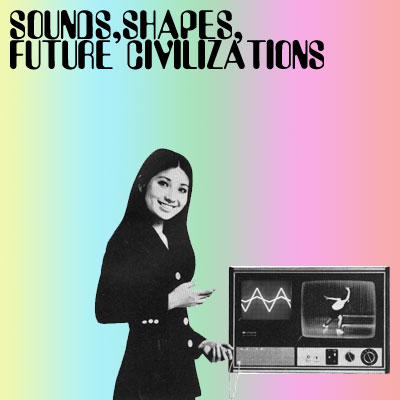
Sounds, Shapes, Future Civilizations is the world wide web outpost of artists Sara Ludy & Austin Meredith. It hosts nearly a decade's worth of their audio, video, and visual art output as well as a collection of works from their friends & collaborators.
Tremblexy is the music outreach portion of SSFC and features the full length album White Tiger available for your aural enjoyment.
I've had the pleasure of working with Sara & Austin in the past, present and future and i highly recommend that you make the time to make your summer more memorable by making your way over to SSFC...
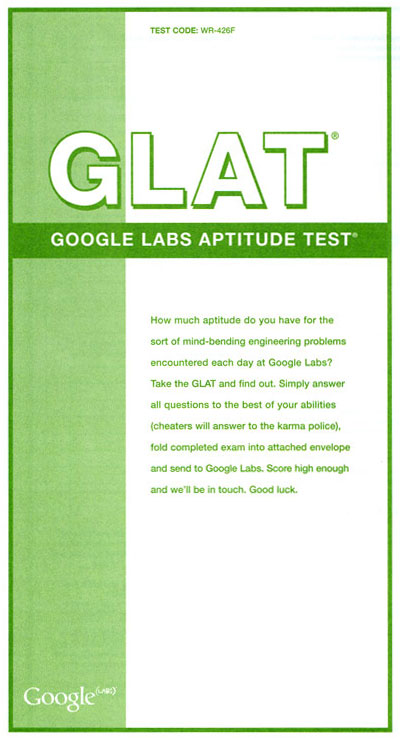
1. Solve this cryptic equation, realizing of course that values for M and E could be interchanged. No leading zeroes are allowed.
WWWDOT - GOOGLE = DOTCOM
2. Write a haiku describing possible methods for predicting search traffic seasonality.
3. What's the next line?
4. You are in a maze of twisty little passages, all alike. There is a dusty laptop here with a weak wireless connection. There are dull, lifeless gnomes strolling about. What dost thou do?
A) Wander aimlessly, bumping into obstacles until you are eaten by a grue.
B) Use the laptop as a digging device to tunnel to the next level.
C) Play MPoRPG until the battery dies along with your hopes.
D) Use the computer to map the nodes of the maze and discover an exit path.
E) Email your resume to Google, tell the lead gnome you quit and find yourself in a whole different world
5. What's broken with Unix?
How would you fix it?
6. On your first day at Google, you discover that your cubicle mate wrote the textbook you used as a primary resource in your first year of graduate school. Do you:
A) Fawn obsequiously and ask if you can have an autograph.
B) Sit perfectly still and use only soft keystrokes to avoid disturbing her concentration
C) Leave her daily offerings of granola and English toffee from the food bins.
D) Quote your favorite formula from the textbook and explain how it's now your mantra.
E) Show her how example 17b could have been solved with 34 fewer lines of code.
7. Which of the following expresses Google's over-arching philosophy?
A) "I'm feeling lucky"
B) "Don't be evil"
C) "Oh, I already fixed that"
D) "You should never be more than 50 feet from food"
E) All of the above
8. How many different ways can you color an icosahedron with one of three colors on each face?
What colors would you choose?
9. This space is intentionally blank. Please fill it with something that improves upon emptiness.
10. On an infinite, two-dimensional, rectangular lattice of 1-ohm resistors, what is the resistance between two nodes that are a knight's move away?
11. It's 2pm on a sunny Sunday afternoon in the Bay Area. You're minutes from the Pacific Ocean, redwood forest hiking trails and world class cultural attractions. What do you do?
12. In your opinion, what is the most beautiful math equation ever derived?
13. Which of the following is NOT an actual interest group formed by Google employees?
A) Women's basketball
B) Buffy fans
C) Cricketeers
D) Nobel winners
E) Wine club
14. What will be the next great improvement in search technology?
15. What is the optimal size of a project team, above which additional members do not contribute productivity equivalent to the percentage increase in the staff size?
A) 1
B) 3
C) 5
D) 11
E) 24
16. Given a triangle ABC, how would you use only a compass and straight edge to find a point P such that triangles ABP, ACP, and BCP have equal perimeters? (Assume that ABC is constructed so that a solution does exist.)
17. Consider a function which, for a given whole number n, returns the number of ones required when writing out all numbers between 0 and n. For example, f(13) = 6. Notice that f(1) = 1. What is the next largest n such that f(n) = n?
18. What's the coolest hack you've ever written?
19. 'Tis known in refined company, that choosing K things out of N can be done in ways as many as choosing N minus K from N: I pick K, you the remaining.
Find though a cooler bijection, where you show a knack uncanny, of making your choices contain all K of mine. Oh, for pedantry: let K be no more than half N.
20. What number comes next in the sequence: 10, 9, 60, 90, 70, 66, ?
A) 96
B) 10 to the 100th power
C) Either of the above
D) None of the above
21. In 29 words or fewer, describe what you would strive to accomplish if you worked at Google Labs.
By Brendan Threadgill
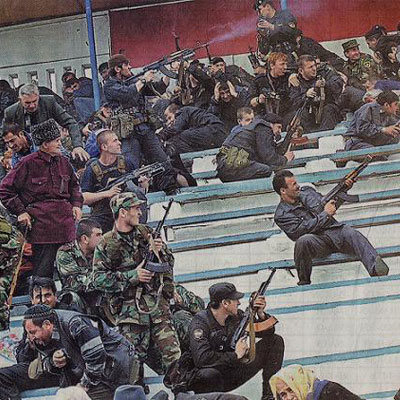
Of the many chaotic and intense "regional" conflicts that marked the 1990’s, one of the most brutal displays of overwhelming military might pitted against maniacal determination and home-field advantage was the First Chechen War from 1994-1996. Along with the war in Yugoslavia, conflicts in the Former Soviet Republic of Georgia, and the Moldovan-Transdniestrian conflict, the Chechen war had deep roots, in this case back to the 18th century and the reign of Catherine the Great.
Having failed in Afghanistan in the 1980’s against a similarly equipped and determined opponent, the Soviet Army (now officially Russian) blundered into another misguided campaign, expecting a surgical strike and rapid capitulation of the rebels. The ensuing war left the capital Grozny in total ruins, rivaling only Sarajevo for post-apocalyptic devastation. The effect of total war on modern cities had been fully realized by World War II with the destruction on Dresden, the firebombing of Tokyo, the London bombing, and of course Hiroshima and Nagasaki. But the high-intensity, compartmentalized conflicts of the 1990’s were something altogether different. These conflicts laid bare the links between geography and black market capitalism. Chechnya was and is important because of it’s place along natural gas pipelines from the Caspian, and there are credible rumors that Russia’s FSB has perpetuated the Chechen conflict in order to create a “black hole” where drug smuggling, human trafficking, and weapons dealing can thrive unchecked. The 1999 apartment bombings in Russia are the clearest evidence of this.


It's in this climate of total destruction and corruption as the status quo that a new generation of pop musicians has begun to emerge, funded largely by pro-Moscow "businessmen". One such pop star is Makka Sagaipova. Makka’s career has been bankrolled by Chechen businessman Malik Saidllaev, who is worth well over $500 million and recently survived multiple gunshot wounds from an assassination attempt. Makka started out singing and dancing with a Chechen dance ensemble that was started primarily as a public relations effort to change people’s view of Chechens, highlighting their "rich history and lavish culture." As one might expect, most of her songs are about love, boys, love of Chechnya, love of Chechen boys, etc. She sings in both Russian and Chechen, blending the often-frenzied traditional song styles with contemporary Russian techno. It’s hard to imagine dance music thriving amid rubble, but perhaps that’s it's true home, colluding with corruption, blending quaint traditions with contemporary debauchery. Chechen pop is showing us the way forward, if we can throw enough roses and take enough bullets to see.
By Justin Lee
We are currently living in the future. This is something that we're all going to have to come to terms with. Actually, have the privilege of living with. Now I know what you're thinking, "Isn’t this the present?" Simple answer, no. One argument goes something like this: "What about flying cars and robot maids?" To which I must remind them that the future is not just one time period, but many periods strung together until the end of time itself. 2012 by some estimates, but that's just crazy.
Still need proof? I should hope so, as I have offered very little thus far.
Exhibit A. The Apple iPhone
Have you ever used one of these fancy gadgets? It’s pretty great. I could go on and on about what features it does or doesn’t have (no copy and paste, really?) But what is at the heart of the matter is how you feel when you use its touch screen interface and hold it’s smooth glass and plastic frame. Every other handset maker churned out a clone within 8 months. Love it or hate it, it’s the phone of the future. And you can buy one right now! But wait until July 11th, which is also the future.
Exhibit B. The Nintendo Wii
Sometimes an innovation comes along that is so simple it racks everyone’s brains as to why it never come along before. Such was the case with Nintendo’s latest video gaming system. Want to hit a tennis ball or punch someone? Just swing the controller! Oftentimes, technology of the future leans toward the simplistic rather than the complex. Look no further than the computers on The Starship Enterprise, or the clothing in Logan’s Run. It would have been absurd to simply keep adding buttons and joysticks to video game controllers. Nintendo realized that we will not have more fingers in the future. Sorry Gattaca.
Exhibit C. The Barack Obama
That’s right. You know damn well the present wouldn’t be enlightened enough to let the next president of the United States be a black man from Hawaii.
I could go on. But I’m too tempted by all the gadgets from the future that I have. They are calling me, some of them literally. If you need more proof, I'll just spout off a few. After all, people in the future have pretty short attention spans.
Exhibits D-K.
